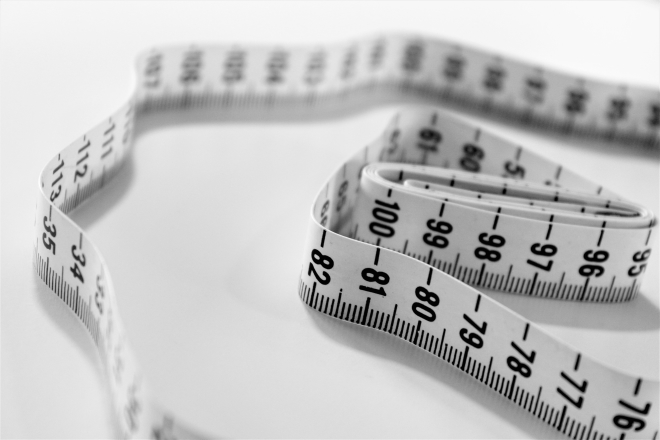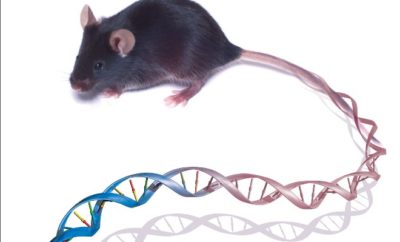
Health x Wellness
Lose weight, gain health
The world has shrunk and Singapore has benefited from this through the years with stellar economic growth around the globe. However, based on the 2017 National Population Health Survey in Singapore, Singapore residents have also grown larger – in girth!
Approximately 9 percent of adult Singaporeans are obese (BMI equal to or greater than 30), and approximately 30 to 40 percent of the Singapore population are overweight (BMI above 23 and below 30).
Based on this trend, the obesity rate is rising at about 1 percent per year. This is alarming as obesity in adults is linked to multiple health concerns.
So What If I’m Overweight or Obese?
Obesity is a silent killer. Being obese is linked to a higher risk of developing life-threatening conditions such as heart disease, stroke, diabetes, high blood pressure, and cancer. Obese children run a higher risk of premature death and disability in adulthood. A survey in Singapore also found out that a significant number of people with BMI 23 or greater are already pre-diabetic or suffer at least one or more chronic diseases such as diabetes.
Besides, a local study discovered that obesity-related health conditions had the largest impact on health in terms of suffering and costs, and having a high BMI is the largest single contributor to the national disease burden of diabetes.
On a more pressing front, obesity is linked to a higher risk of death in patients who contracted the COVID-19 virus.
So if you are overweight or obese, this may be the right time to consider changing your lifestyle and routines.
How do I know if I am Overweight or Obese?
Simply, if your body has excess body fat that affects your health adversely, you are obese or overweight. There are 2 ways to check if your weight is ideal.
The most commonly used method is to calculate your Body Mass Index (BMI). The BMI is calculated as weight (kilograms, kg) divided by (height (meters, m) x height (m)).
So, a BMI of 18.5 to 22.9 is ideal. A BMI of 23 to 29.9 is considered overweight. A BMI of 30 and above is considered obese.
A better way of estimating body fat is by measuring waist circumference, and is often used to assess the risk of heart disease.
Waist circumference of above 80 centimeters (cm) for women and above 90 cm for men infers abdominal obesity and this means that you are at a higher risk of developing obesity-related diseases.

Move and do something
If you are overweight or obese, get moving. Even if you are not overweight, keep up a lifestyle and mobility to maintain your weight for optimal health.
Set a Realistic Goal
When it comes to weight loss, there is a tendency of desperation to try and lose weight in a short period of time. Some go to the extent of extreme dietary regimes and extreme physical workout regimes that often backfire with feeling terrible, having low energy, and even getting physically injured.
Before you begin, understand that losing weight is a journey, and keeping fit and trim is a lifelong pursuit. It does not happen immediately and it often takes patience, time and perseverance. Set a realistic and healthy goal, such as aiming to lose 0.5 kg to 1kg a week, and adjust your targets along the way.
Exercise and Nutrition
A holistic weight loss journey will always require adjustments to your lifestyle and diet. This is the most important but often the most neglected part of the weight loss effort. Many may have misconceptions that they can start taking medication and undergo medical treatments, and can totally ignore their diet and lifestyle but will still be able to lose a considerable amount of weight and fat.
Regular exercise offers many health benefits for everyone. Start with something that you enjoy so it becomes sustainable. Regular physical activity throughout the week (preferably 3 to 5 times a week, with 30 to 60 minutes each time) contributes significantly to losing weight and keeping your body and heart pumping healthily. Get a friend or family member to exercise with you so you can keep each other motivated.
You are what you eat. Little changes count when it comes to weight loss. Cut down on sugar, carbohydrates, and fat. Reduce salt in your food. Eat more vegetables and fruits. Eat regular meals and in moderation. If you run into difficulties, consult a nutritionist.

Avoid going extreme (such as keto diets and intermittent fasting) because this often is not sustainable and can potentially lead to unwanted side effects such as feeling lethargic and having mood swings. Try not to get too obsessed with counting calories because this often makes people feel unhappy, guilty and demoralized.
Get Help
If you have already done the above and are still struggling with losing weight, consider getting help from healthcare professionals. Consult a doctor to discuss alternatives. Your doctor may design a safe and practical weight loss program based on your health condition, lifestyle and desired outcome. Your doctor may recommend medication and/or treatment that may help you achieve your goal.
Generally, there are 3 types of prescribed medication that help you lose weight. Your doctor will advise you thoroughly on what these medications are and how you should approach them.
An appetite suppressant pill such as Phentermine suppresses your appetite for food, and at the same time helps increase the utilization of energy by the body. It is usually prescribed for no more than 3 months.
A pill such as Orlistat may help reduce fat absorption, and may be useful for people who tend to consume foods with high fat content.
An injectable medication such as Liraglutide may make you feel less hungry which then leads to lower calorie intake.
Once your doctor starts you on any of these medications, you will need to be monitored closely for the side effects and the results of the medication. Your doctor will discuss with you in detail to determine which medication is suitable and safe for you.
Technology
Technology has come a long way that we now have devices that may help reduce stubborn fats in specific parts of the body, such as the abdomen and the thighs, and also the double chin. Cryolipolysis, or commonly known as the “fat freeze” treatment, is a non-invasive fat reduction technique that uses a controlled cooling technology that freezes away unwanted stubborn fat cells. It may be used as a supplementary treatment to lose weight and fats. Your doctor will advise you if such a technique is safe and applicable for you.
Mentality
If you are overweight or obese, the first step is to adopt the right mindset, of desiring positive and sustainable change. Adopt some of these strategies to work towards your physique and health goals. Once you start a weight loss journey and surround yourself with supportive friends and family, nothing is going to hold you back!
Article contributed by Dr Sii Sik Liong
Dr Sii Sik Liong is the resident doctor at S Aesthetics Clinic, he graduated with a Bachelor of Medicine and Bachelor of Surgery from St George’s University of London. He also holds the postgraduate qualification of the Membership of the Royal College of Physicians (MRCP, UK). He is an experienced doctor in the field of Aesthetic Medicine. He is fully accredited in aesthetic procedures such as dermal fillers, Botox and laser treatment. He has attended numerous Aesthetic courses and conference around Asia, Europe and the UK, and has been actively involved in researches and studies, as well as education throughout his working years.
Dr Sii believes in consistence holistic and friendly approach to his patients has earned him numerous compliments throughout the years, and he will continue to improve to produce better care and treatment for his patients.
Photo credits
- Photo by Siora Photography on Unsplash
- Photo by Brooke Lark on Unsplash
- Photo by Christopher Williams on Unsplash









